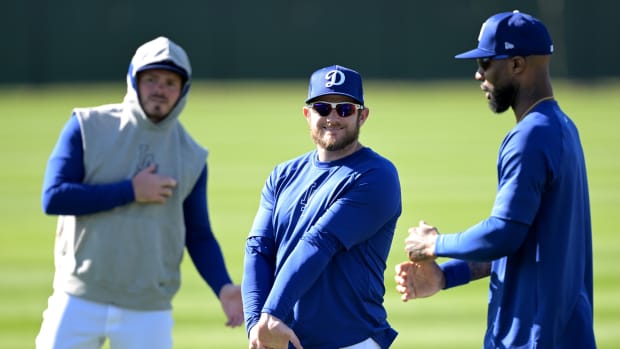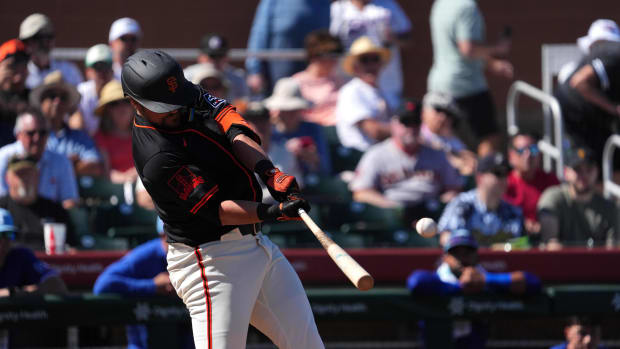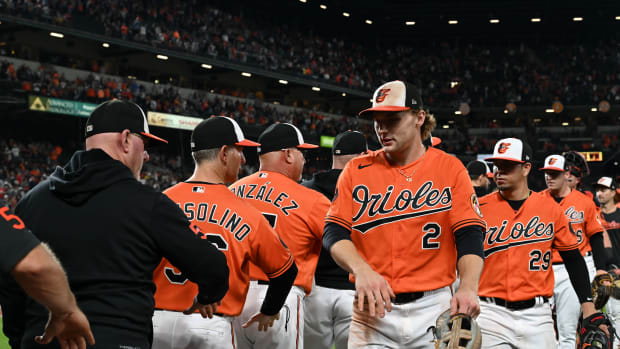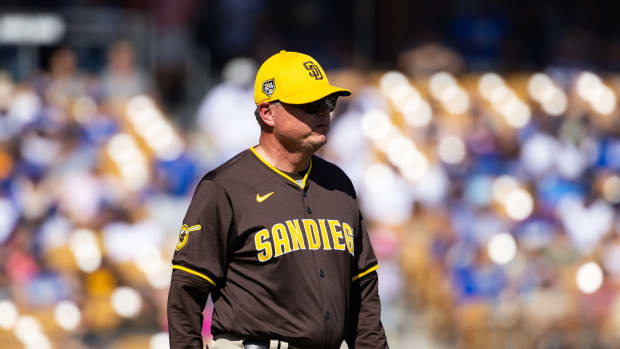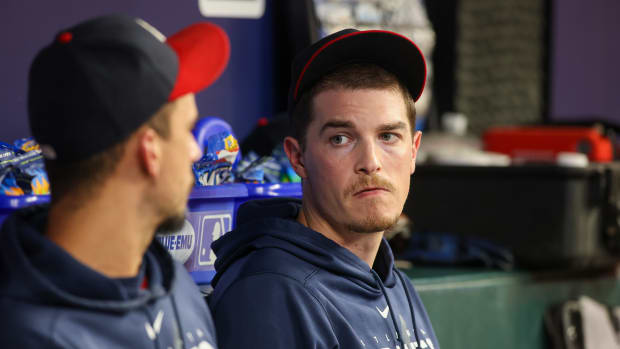The Free Agent Market is Frozen Because the Players Bargained for Luxury, not Labor
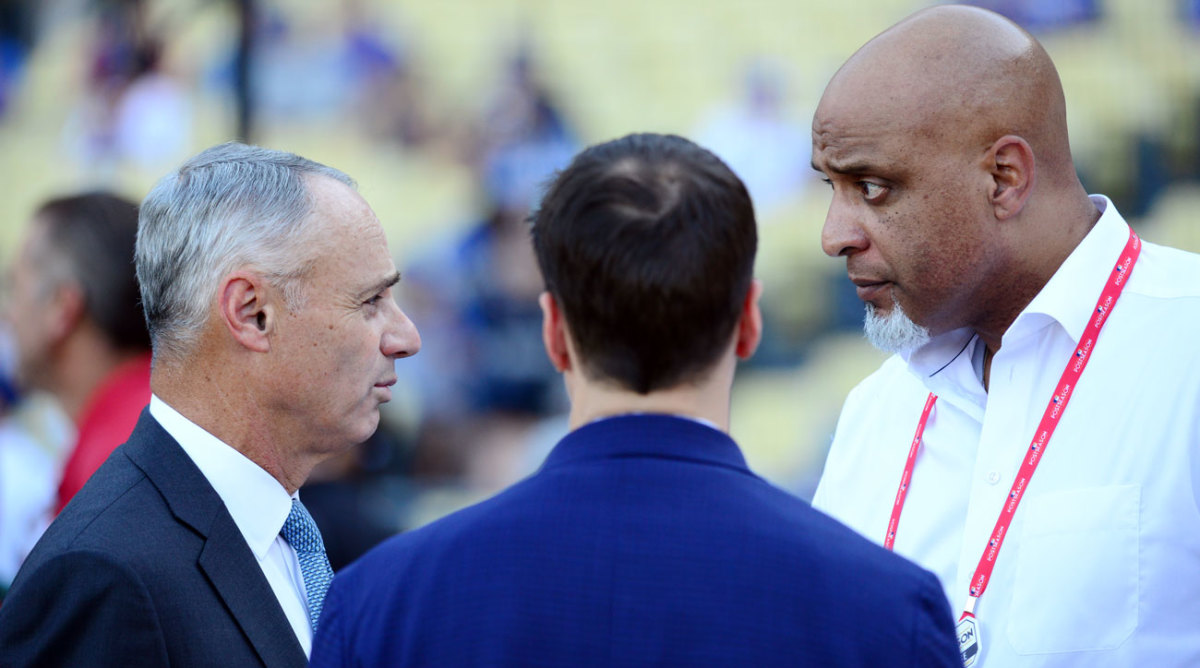
Training camps open in two weeks, with more than a hundred free agents waiting for more money than what’s been out there and commissioner Rob Manfred ready to unilaterally implement pace-of-action procedures. These are nervous times for the players association. Nobody revealed this anxiety more than Brodie Van Wagenen, an agent who turned, in Trumpian style, to Twitter In The Morning to bare his worried soul.
Van Wagenen penned a screed against the stagnant free agent market, in the most inflammatory language heard in years. He hinted at charging the owners with collusion, though instead of using the word he danced around it awkwardly by saying, “It feels coordinated,” with the big-time hedge of adding “rightly or wrongly.” (So owners could be in the right.)
He suggested that players boycott spring training, a direct repudiation of the union’s position on a conference call this week, in which players were told any such organized action would be unlawful.
Referring to the all-time low in the labor relations history between owners and players—the 1994–95 strike that wiped out the 1994 World Series—Van Wagenen said the players voices “are uniting in a way not seen since 1994.”
Do you know where Van Wagenen was during the great labor war of 1994? He was in Palo Alto, Calif., happily playing baseball for Stanford University.
Oh, and his saber-rattling about player resolve comes the day after one of the foot soldiers, Brandon Moss, blamed the union itself for getting rolled in the last Collective Bargaining Agreement. That was the deal that stiffened the soft cap created by a luxury tax threshold that hasn’t come close to keeping up with growth in revenues and payrolls.
“Everybody wants to look up and scream, ‘collusion,’” Moss said. “Everybody wants to look up and scream, ‘This isn’t fair.’ But sooner or later, you have to take responsibility for a system you created for yourself. It’s our fault.”
The union lost the CBA negotiations because it was obsessed with “quality of life” issues, such as days off, empty seats on buses, and clubhouse chefs, and because many players railed against the idea of a worldwide draft—a huge red herring. The worldwide draft was a bluff; it’s too hard to get international communities and government agencies to cooperate on such a system. But when the owners essentially said, “Ok, you win, we’ll take the international draft off the table,” the union celebrated a Pyrrhic win: it “won” something that was never there and never would be there.
Economic issues? They took their eye off the ball, and the error is showing up on the scoreboard now that the intellect of front offices has risen to an all-time high.
Here’s the problem that players and especially agents have trouble accepting: they are working in a disrupted industry. A rise in intellect and information has fundamentally changed the economics of baseball, just as they have changed many industries. Corporate profits are up in a roaring economy while wages are stagnant? How familiar does that sound to many millions of Americans?
About a decade ago, Oakland president Billy Beane said he could never get a job in the game today because he would be under-qualified. His desk was being bombarded with résumés of some of the brightest young minds in the country, people who had the education and smarts to be working on Wall Street, in policy think tanks, internet startups or corporate behemoths. More than anything, they brought an understanding of data-based value and risks. They have taken emotions out of the buying side of baseball, much to the chagrin of agents, who like to sell with pixie dust and ephemera.
There is no greater totem of a time gone by than the infamous Scott Boras Binders. There was a time not long ago that the agent, who operates essentially as a 31st franchise, given the size and thoroughness of his corporation, was celebrated for producing these silk-covered, hard-bound binders with vast statistical evidence about his clients’ extraordinary value. Reporters would breathlessly describe the bit of publishing razzle-dazzle as if a new Harry Potter edition were released. Owners were impressed.
In one of Boras’ greatest sleights of hand when it came to making numbers work, he compared 27-year-old Oliver Perez to Sandy Koufax and Randy Johnson, two of the greatest lefthanded pitchers in the history of the sport. The Mets gave Perez $36 million over three years.
Over those three years Perez went 3–9 with a 6.81 ERA and pitched only 112 1/3 innings.
That happened in 2008. It may as well have been in the Mesozoic era.
The Oliver Perez of 10 years ago (55–60, 4.39, 999.1 innings, with an ERA+ of 96) today is Jhoulys Chacin (59–67, 3.93, 1023, 111). Chacin signed for $15.5 million over two years.
The dinosaurs are dead. The Mesozoic era is over.
You don’t hear much about the Boras binding business now because even the most analytically-challenged club has a firm, well-educated grasp of value. Thanks to sites such as Fangraphs and MLB Trade Rumors, the average fan has a better idea of value than what some clubs had in 2008 when Perez was on the market.
It wasn’t hard to see this winter coming. I told you at the start of this market why Jay Bruce was not going to get the money Jason Bay or Nick Swisher got back in 2009 and 2012, respectively. MLB Trade Rumors estimated he would sign for $39 million over three years—the exact contract he received from the Mets.
I told you at the beginning of the market why older hitters, especially corner players, don’t have the same value any more. And yet Van Wagenen can’t understand why Todd Frazier, his client who is about to turn 32 and has hit .220 over more than a thousand at-bats the past two years, can’t get Michael Cuddyer money from six years ago ($31.5 million over three years).
I understand why agents don’t like this disruption. They should be angry that they aren’t getting the kind of money thrown around years ago. But their argument falls apart when it is based on using bad contracts to justify the continuation of more bad contracts.
In 2013 alone, for instance, the free agent market included jackpots from mid- and small markets to Shin-Soo Choo ($130 million over seven years from the Rangers), Jhonny Peralta ($53 million over four years by the Cardinals), Matt Garza ($50 million over four years by the Brewers), Ricky Nolasco ($49 million, four years from the Twins), Ubaldo Jimenez ($48 million, four years from the Orioles) and Omar Infante ($30 million over four years from the Royals).
Agents look at those deals and see barometers for their current clients.
Teams look at those deals and decide, especially as the game is turned over more and more to younger players, that it’s a mistake to pay for a player’s decline when prime years of young players are far more efficient.
The other disruption is how teams have moved out of the middle of the road when it comes to competing. They’ve smartly realized—and again, this is because information has become so much more reliable in forecasting—that if you are not competing for the World Series, you should hold your powder for when you are close enough to that goal.
Here’s an example of the old way: the 2014 White Sox went 73–89. Only two teams in the American League gave up more runs. They were eighth in runs scored while striking out more than all but one team in the league. By any measure, they were not very good. But they had Jose Abreu and Chris Sale, and GM Rick Hahn didn’t want to let their primes pass without trying to win.
So this is what the White Sox did that winter: they dropped $132 million on free agents Dave Robertson, Melky Cabrera, Adam LaRoche, Zach Duke and Emilio Bonifacio. What happened? They went 76–86. They spent $132 million for three more meaningless wins. They spent money when they weren’t ready to win.
The next year they went 78–84. Finally, two years too late, Hahn began a teardown of a bad club.
Nothing drives the game more today than where a team is on the winning curve. Nobody chases 81 wins any more, the way the White Sox did. You spend when you are ready to chase 87 wins, the figurative bar for a wild card spot.
The Pirates are this year’s facsimile of the 2014 White Sox, a 75-win team with a terrible offense and mediocre pitching staff. Would Pittsburgh be a contender by throwing around $132 million this winter? The Pirates’ problem is they never spent enough money when it would have made a difference. When they did have a World Series caliber team, they didn’t spend to finish off those clubs, the way the Cubs, Astros and Royals did when they were on the right end of the winning curve.
I understand Van Wagenen’s stress. Besides the frozen winter, the players are backed into a corner on the pace-of-action initiatives. These are tough times for players even though the economics of the game are strong. They should be speaking out, though better it come from Tony Clark and strong union leadership—the way it did in the past—than the Twitter thumbs of an agent.
Boras is right that the incentive to win must be stronger than the incentive to lose (i.e., save money). The players do have a legitimate gripe here with the way the game has turned so sharply against them, even if it’s still in a world where Eric Hosmer can turn down seven-year deals and Alex Cobb doesn’t jump at $42 million.
But the rules of the game were bargained collectively. As long as owners aren’t dumb enough to repeat their mortal sin of collusion, players are getting squeezed by a new world order. They need to start working on solutions for the next CBA, to take the fight about chefs to economic issues. In the meantime, as Van Wagenen showed the world, these are anxious times to be a veteran player in a disrupted world.
































